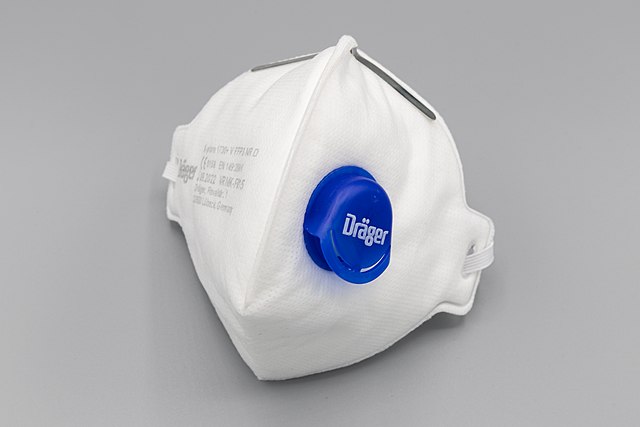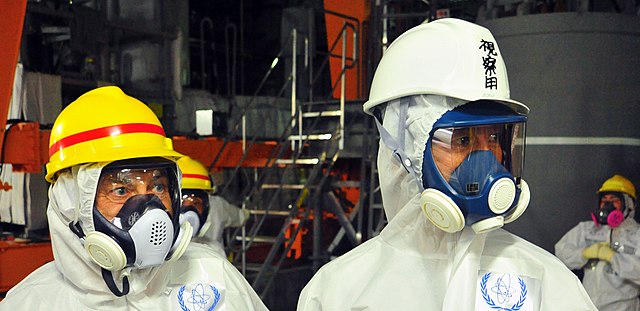A respirator is a device designed to protect the wearer from inhaling hazardous atmospheres including fumes, vapours, gases and particulate matter such as dusts and airborne pathogens such as viruses. There are two main categories of respirators: the air-purifying respirator, in which respirable air is obtained by filtering a contaminated atmosphere, and the air-supplied respirator, in which an alternate supply of breathable air is delivered. Within each category, different techniques are employed to reduce or eliminate noxious airborne contaminants.
Lab worker wearing a powered air-purifying respirator
Types of respirators by physical form. Click to enlarge.
Workplace protection factor (PF) of filtering facepiece, measured in real time with two optical dust meters. In-facepiece dust concentration is changed dozens of times in a matter of minutes due to changes of the size of the gaps between the mask and face.
A simple Dräger escape respirator. This model has no hood, and instead comes with noseclips to ensure the wearer breathes only through the filter.
Mechanical filter (respirator)
Mechanical filters are a class of filter for air-purifying respirators that mechanically stops particulates from reaching the wearer's nose and mouth. They come in multiple physical forms.
Face mask (filtering facepiece respirator) FFP3 with exhalation valve
Filtering half mask, reusable elastomeric respirator with pink replaceable pancake filters and grey exhalation valve
Full-face elastomeric respirators seal better.
Cross-section of NIOSH-approved P95 filters used in metalworking operations. Even "clean" industrial processes often generate large amounts of harmful particulate matter and require breathing protection.








